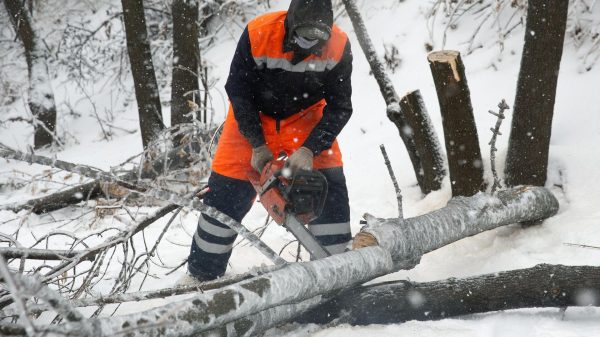A metal detector helps find a golden figurine in an Avar cemetery in Hungary.
Ancient DNA reveals more secrets about the Avars, a formidable people who built a mysterious ancient empire that ruled much of Central and Eastern Europe Europe for 250 years, starting from the middle of the 6th century.

Known mainly from the accounts of their opponents, the Avars defeated the Byzantines by launching surprise horse raids and occupying new territories. Mysterious nomads came en masse from the Mongolian steppes, in one of the largest and fastest long-distance migrations in ancient history.
With rich burials but a lack of written evidence, the empire and its people remained until recently in the shadow of history. But a landmark study in April 2022 using ancient DNA taken from the tombs of the Avar elite has shed light on the empire's distant origins.
A new study, which analyzed the remains of 424 people buried in four cemeteries discovered in Hungary, revealed details of the family and social life of the Avars, as well as how the nomads interacted with the local population.
“What me?” What surprised me most was the simple fact that these people in the cemeteries are so interconnected,” says researcher Sofia Ratz.
Archaeologists have been able to construct detailed family trees, the largest of which spanned nine generations over 2 and a half centuries. The team found that about 300 people had close relatives buried in the same cemetery.
The analysis found that men remained within their community after marriage, while women married outside their original community — a pattern known as patrilocality.
“In all the female lines, we cannot find the parents. While all men are descendants of the founders of their dynasty,” explains Guido Alberto Gnecchi-Ruscone.
According to the archaeogeneticist, a study of mitochondrial DNA that identifies the female line showed high variability, suggesting that women who married representatives of Avar groups came from different places. They still shared common «steppe» genetic roots, indicating that they were probably not conquered natives.
Moreover, as the study showed, in Avar society, both men and women quite often had children from several partners. For men, the researchers found two partners in 10 cases, three partners in four cases, and four partners in one case. The analysis suggests that having multiple wives was relatively common among both the general population and the elite.
The team also found many cases of closely related men starting relationships with the same partners.
The team also found many cases of closely related men starting relationships with the same partners.
The team also found many cases of closely related men starting relationships with the same partners.
According to the study, similar unions formed after the death of a woman's husband existed in other Eurasian steppe societies, suggesting that the Avars, who abandoned their nomadic herding lifestyle and became more sedentary soon after arriving in Europe, adhered to some aspects of their culture.
Geneticist Lara Cassidy said the study's authors had «cleverly unraveled» the organizing principles of this medieval society, providing «strong evidence for a rigid patrilineal system in which children belonged to their father's family and their ancestry was traced.»
“However, two cases of men having multiple older lovers provide a strong argument in favor of polygyny (having multiple wives). And most cases where women had multiple partners were obvious levirate unions, in which the widow married the son or brother of the deceased. This is a common custom among pastoralists that both provides for widows and obliges ancient families to honor marriage contracts, provided that the women left without husbands can produce male heirs,” explains Cassidy.
According to Gnecci-Ruscone , it was impossible to understand gender power dynamics in society by studying ancient DNA alone. But items of high status, such as horses, saddles and harnesses, were more often found in male burials. However, women have played a role in strengthening the social cohesion that binds individual communities.
Cassidy notes that the history of female genealogy was important to the Avars because it ensured that daughters would not take husbands from among the relatives of their mothers or grandmothers.
Kara graves—about 100,000 excavated to date—are an important part of Europe's archaeological heritage. The people were once part of what the Chinese called the Ruran Khaganate, or a confederation of tribes, which the Turks defeated in 550, forcing the Avars to flee west.
Covering more than 5,000 kilometers from Mongolia to the Caucasus in a few years, according to According to a study published in the journal Cell in 2022, which pointed to the group's Asian origins, the Avars founded a community in what is now Hungary and came close to destroying Constantinople.
Some historians believe that it was the Avars who brought the stirrup to Europe — a revolutionary technology that made mounted warfare possible and subsequently became widespread throughout the continent.























































Свежие комментарии